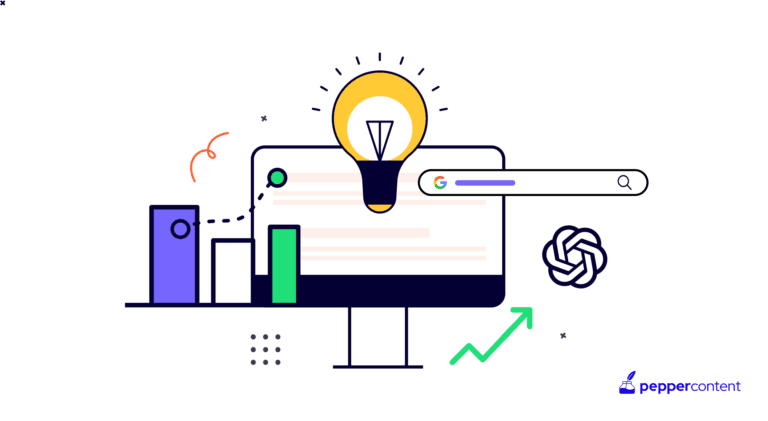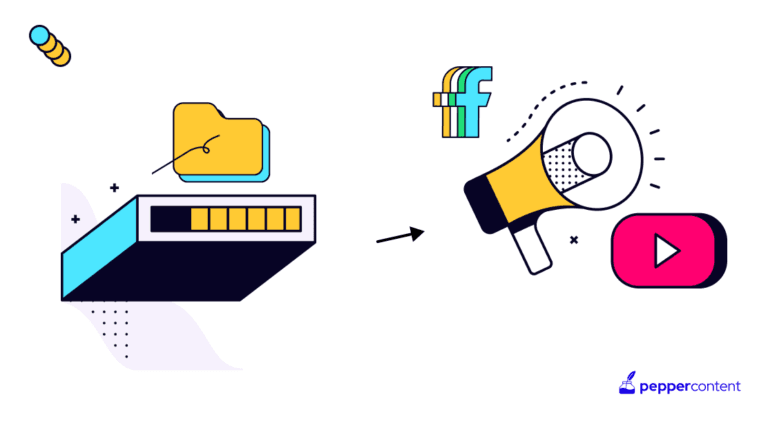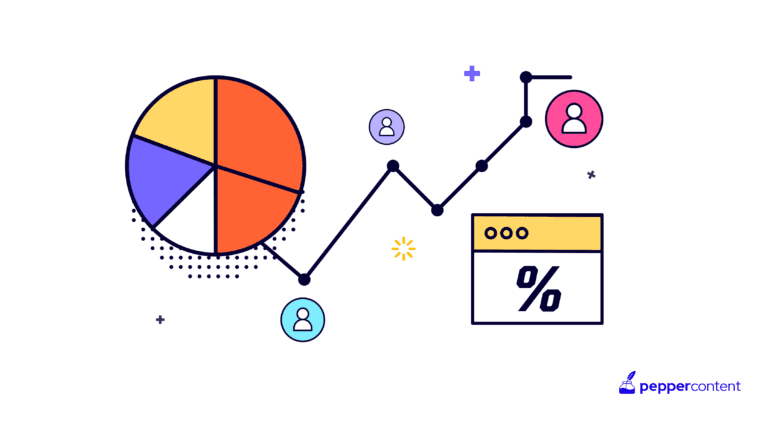
Marketers around the world scratch their heads around this problem: how do I make my potential customers decide to actually buy my product through my content? In other words, how can I create relevant content that converts my audience to customers?
Enter the content matrix. No, it’s not from ‘The Matrix’ movie, though it is a marketing superpower.
The content matrix is a framework that supplies the secret ingredient of content marketing: The right content at the right stage of the buyer’s journey.
It is a visual scatter-plot like diagram organizing your content on two parameters:
- Stage of the buyer’s journey (Awareness, Consideration, Decision)
- Type of engagement (Rational, Emotional)

Content can entertain, educate, inspire, or convince a potential buyer on their stage. You consider if you want your audience to know that your product exists (awareness stage) using virals, quizzes, and brand videos. If you want them to learn more about your product, you educate them using infographics, blog posts, and guides. Once the audience is aware and starts connecting to your product, you inspire them (if the product appeal is emotional) or convince them (if the product appeal is rational).
The content matrix allows you to take a high view of your content map. It is not a content calendar. The content matrix tool is strategic; a content calendar is executional.
10 Reasons You Must Use a Content Matrix For Your Business
1. Generates more leads
The first step of the marketing funnel is generating inbound leads. Equipped with insights into your audience’s needs and pain points, you know what content resonates with them the most at the awareness stage.
A viral video might work for skateboards, while an infographic might suit refrigerators. The content matrix allows you to tap into a larger audience base, generating more leads.
2. Focuses on the audience
The content matrix places the audience at the center. It ideates your content plan based on their needs. This will allow you to create high-quality content. What you show to your audience comes from a carefully mapped vision of their journey; they get what they exactly need. You reach the fulcrum of meeting their needs by fulfilling your marketing goals.
3. Identifies leaks in your content
Content matrix parameters map your current content, enabling you to discover leaks and holes in your strategy. You can assess whether you’re sending them the right content with your buyer persona in hand. This makes content planning and organizing easier.
4. Identifies content needs
With its visual appeal, the content matrix gives you a solid glance at whether you’re providing relevant content for all stages of your target audience. You may realize you’re nailing at acquisition but not at final conversion or that you’re generating a lot of visuals but less informative posts. This means a higher focus on the later stages of the buyer journey and more written content.

5. Aligns ideas and efforts toward the right content
Once you’ve identified weak spots in your content strategy, you brainstorm. What content would suit our potential buyer at a later stage? At an earlier stage? You decide on which area to cover (or which area to cover less of) and what content formats to use in each of them that resonates with the audience. You find a purpose for all of your content.
6. Gauges audience interest in content types
The content matrix builds upon the buyer journey by taking empirical evidence of what has worked. Not all content is equal; even if they lie in the same quadrant, some content resonates more than others. The content matrix enables flexibility in approaching the audience with varied content types and arms itself with insights on what works better than others. This builds a better model of the buyer journey and pain points.
7. Increases conversion rate
As a strategic framework, the content matrix aligns all marketing efforts with sales. High-quality content fulfills the buyer’s needs at all stages of their buying journey. The matrix ensures the buyer does not get blocked anywhere by studying the buyer’s needs and challenges and where they are likely to get stuck. This speeds up the buying process, increasing the conversion rate.
8. Ensures the better flow of new ideas
As you put out all of your past content on the matrix, you identify gaps and utilize your learnings to generate better ideas for future content. The content matrix enables a marketer to see all content creation as moving parts of a greater whole rather than isolated pieces. You know what has worked, what hasn’t, what needs attention, and what you can do. Armed with such insights, your laboratory of ideas begins to expand.
9. Visualizes and communicates your content strategy in an easy-to-understand way
The content matrix, while offering tremendous strategic advantage, is also simple and easy to understand. While crafting your content strategy, the content matrix makes it easy to see what steps can be taken to fulfill your buyer persona’s needs. The matrix also works as a splendid communication tool. Anyone can understand what it represents and where the future action lies.
10. Utilizes both of the mind’s faculties
The path of decision-making is neither entirely rational nor emotional. It lies in a mixture of both. Even when we take an emotional decision, we tend to rationalize it. The content matrix plays on this idea by appealing to both instincts of the target audience. While the initial stages of awareness may require an emotional appeal, conversion and decision almost always require a mix of both.
A content matrix tool is an effective way to redefine your content to fulfill your potential buyer’s needs at every stage of the buying process. All your marketing efforts align with your marketing goals, with zero time wasted on shiny useless content.
Entertain, educate, inspire and convince your buyers, and see how happily they turn into long-lasting customers. The content matrix tool is the perfect addition to your tool bag to achieve this feat!
FAQs
A content marketing matrix is the same as a content matrix; a visual map that arranges your content based on its place in the conversion funnel and the tactic it uses to reach the target audience.
First, build your buyer persona; who are they, their needs, and pain points. Then you map out their journey with the highest level of detail, outlining where they face setbacks. With the buyer journey stages cleared, start devising content plans for each stage. Formats and emotional/rational approach comes at this stage. Finally, get your content out and measure your results.
A content audit is organizing and assessing your past content to create better future content. A content matrix is a useful tool for content audit as it shows a high-level view of your content.
The cornerstone of good content is focused on the audience. The content matrix is the magnum opus tool for good content as everything in it centers around the audience.
Content metrics are numbers that measure the effectiveness and ROI of content marketing. E.g., Lead Quality, Sales, Web Traffic, etc. It is different from a content matrix, which is a strategic framework to align your content in the right direction.
Latest Blogs
In this blog, explore the golden rules of using AI marketing tools so you can leverage the benefits to their maximum potential.
In this blog, you’ll learn how to avoid the pitfalls of SEO over-optimization while enhancing your site’s performance.
In this article, we’ll take a look at what AMP is, its advantages and disadvantages, and how it affects SEO.
Get your hands on the latest news!
Similar Posts

Content Marketing
8 mins read
The Ultimate Round-Up of Content Marketing Tips from 2023

Content Marketing
6 mins read
Content Marketing in the Age of Big Data: Leveraging Data for Competitive Advantage

Content Marketing
6 mins read